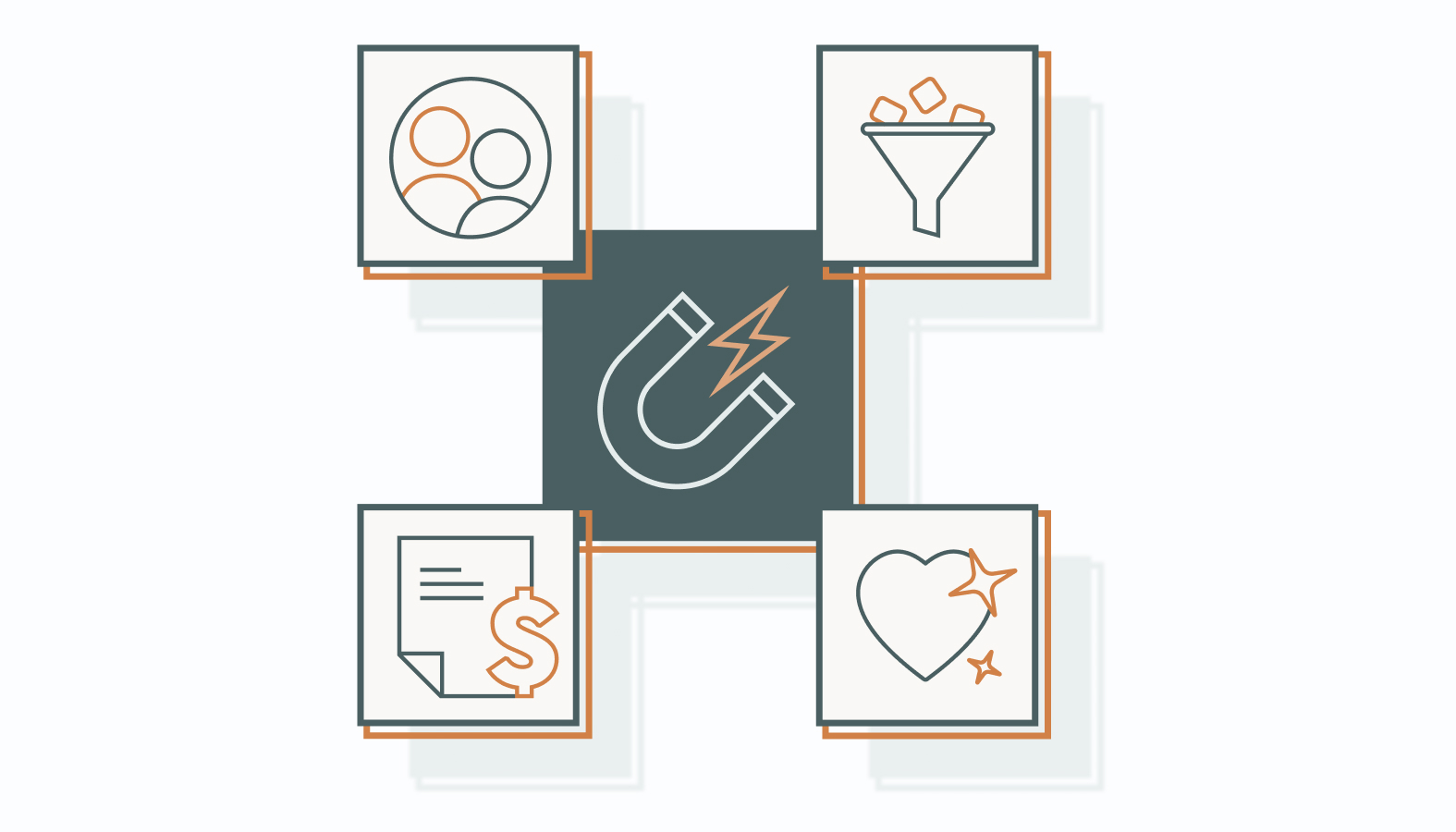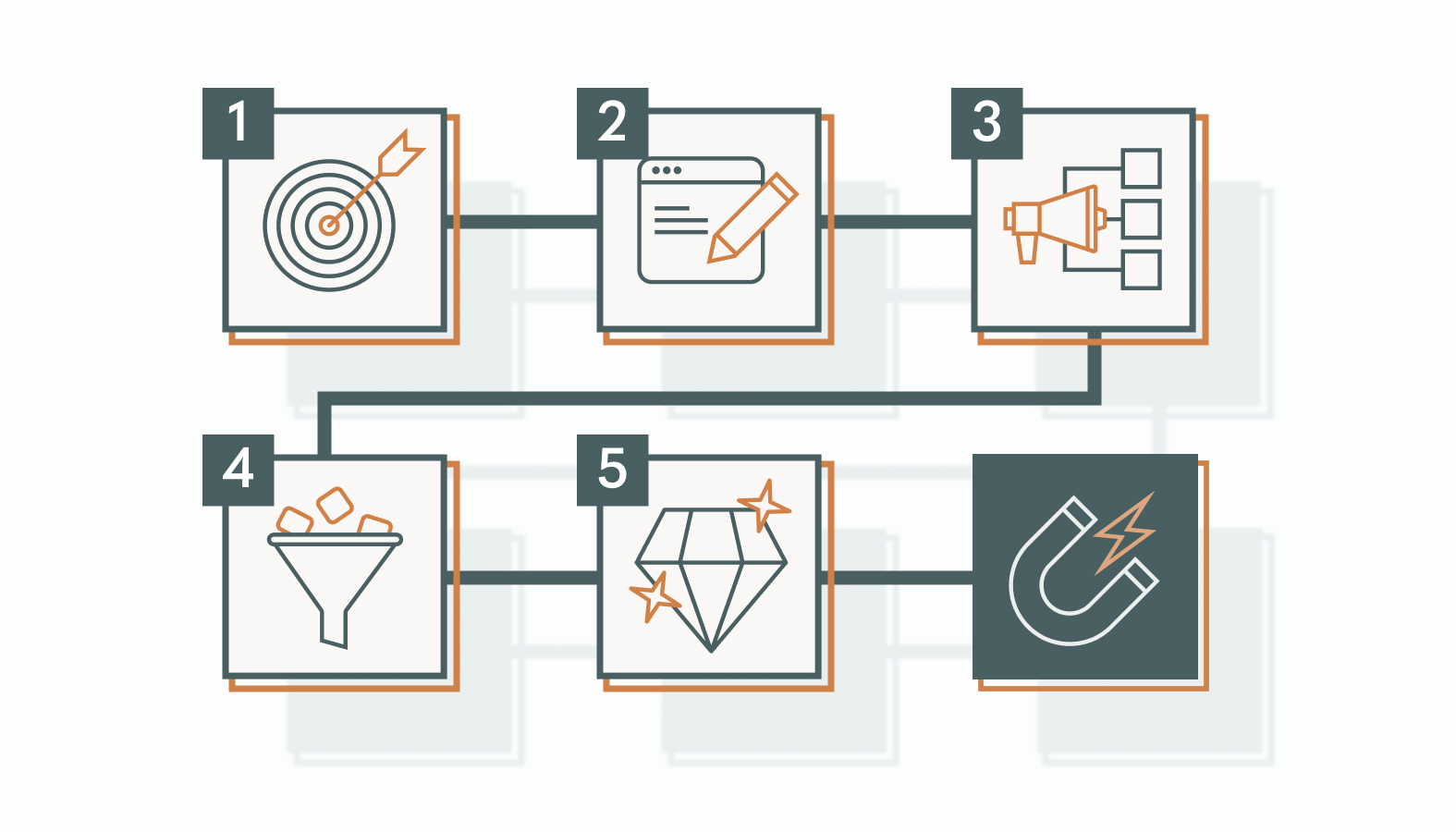Businesses face the constant challenge of engaging and retaining customers. Inbound content marketing offers a powerful solution by creating useful and relevant content that attracts and delights your target audience. Unlike traditional marketing methods that often feel intrusive, it focuses on understanding and addressing what your customers truly want.
Using an effective inbound content strategy, businesses can build meaningful relationships with their audience and turn leads into loyal supporters. This approach not only builds trust but also drives sustainable growth by aligning your content with your audience’s preferences and consumption habits.
In this guide, we’ll discuss strategies and tips to help you successfully implement and improve your inbound content marketing for steady growth.
The Fundamentals of Inbound Content Marketing for Your Business
Implementing an inbound content marketing strategy can greatly benefit your business. It promotes sustainable business growth and increases your profits without aggressive marketing tactics.
The Inbound Marketing Methodology
Inbound marketing focuses on attracting, engaging, and delighting customers. It does this by providing valuable content and experiences tailored to your audience to naturally attract them to your brand.
Once they’re engaged, the focus shifts to nurturing these relationships through personalized content and interactions that help them decide to buy. The goal is to exceed expectations to build loyalty and turn satisfied customers into enthusiastic brand advocates.
Captivate Your Target Audience
To create engaging content, you must first identify and understand your target audience. Start by developing detailed buyer personas based on their demographics, online behavior, and customer feedback. Once you know who you’re speaking to, you can personalize your content to address their needs and pain points.
Crafting compelling content involves more than just writing well. Use relatable stories, striking visuals, and a tone that matches your brand. This approach will attract prospective customers and keep them interested in your brand.
Transform Visitors Into Leads
To convert visitors into leads, use clear calls-to-action (CTAs) and landing pages. Place your CTAs strategically throughout your content to guide visitors to take action. Your landing pages should provide relevant information that encourages visitors to share their contact details for lead generation.
Lead nurturing is key in this process. Use personalized content such as email campaigns and targeted offers to build relationships and keep your leads interested. This personalized approach helps move prospects through the sales funnel, leading to successful conversions.
Seal the Deal With Effective Closure
To close deals, guide leads through the sales funnel by building trust and addressing their concerns. Offer solutions that meet their needs. Engage with them through personalized follow-ups, demos, or consultations to make them feel valued and understood.
By genuinely addressing their needs, you’ll increase the likelihood of securing final agreements and turning leads into paying customers.
Exceed Expectations to Foster Loyalty
To boost loyalty, provide exceptional customer experiences. Exceed expectations with outstanding support, quick responses, and ongoing communication after the sale. Make customers feel valued and appreciated to encourage repeat business.
Keep engaging with them through feedback, exclusive content, or rewards, and stay connected through social media and email. This approach helps reinforce positive relationships and turn your customers into enthusiastic promoters of your brand.
Beyond Blog Posts: Diversifying Inbound Content
In inbound content marketing, using a variety of content formats helps engage a diverse audience by catering to different audience preferences and consumption habits. Going beyond traditional blog posts lets you reach new platforms and mediums, ensuring your message resonates more broadly and effectively across your target market.
Engaging Audiences Through Videos
Video content is powerful in digital marketing because of its ability to engage audiences and boost conversions. Videos can quickly communicate complex messages in a visually appealing and easily digestible format, making them ideal for capturing and engaging your audience’s attention.
To create compelling video content, focus on storytelling techniques that connect with your audience emotionally. Use high-quality visuals and sound to improve the viewing experience.
Remember, each platform has unique characteristics, so optimize your content for different platforms like YouTube and social media by adjusting their length, format, and style to suit each platform’s user behaviors and preferences.
Connecting Live With Webinars
Webinars are great for interacting with and educating your audience on specific topics. They offer a live, interactive format that encourages real-time engagement and learning, allowing audiences to ask questions and receive immediate feedback.
To host successful webinars, choose topics that interest your audience. Promote your events effectively through email campaigns, social media, and your website for maximum attendance. Engage participants during the session by encouraging questions, using polls, and facilitating discussions.
Building Connections With Podcasts
Podcasts continue to grow in popularity, offering an intimate way to build a personal connection with your audience through authentic and conversational content. They allow brands to reach listeners in moments when visual media can’t, like during commutes or workouts, providing a unique opportunity to engage and build loyal audiences.
When developing a podcast strategy, choose a format that fits your brand and audience preferences, whether it’s interviews, storytelling, or educational content. Choose topics that will engage and inform your audience, and use distribution channels such as Apple Podcasts, Spotify, and Google Podcasts to reach a broader audience.
Be consistent in publishing and promoting your podcast episodes to grow a loyal listener base and strengthen your brand’s authority.
Exploring Inbound and Outbound Content Marketing Strategies
It’s important for a marketer to understand the differences between inbound and outbound marketing strategies to improve their approach. Both strategies are useful depending on your goals and target audience.
Differentiating Marketing Approaches
Inbound and outbound marketing differ in their methods. Inbound marketing attracts customers with quality content that addresses their needs. It uses tactics such as blogging, search engine optimization (SEO), and social media engagement. Inbound strategies draw prospects in voluntarily by offering value.
Conversely, outbound marketing employs a more traditional and interruptive approach to capture audience attention, such as TV commercials, billboards, and cold calling. It aims to reach a broad audience quickly, often without prior connection with the consumer.
How You Engage With Your Audience
Inbound marketing thrives on fostering two-way communication and building relationships. Techniques like interactive content, personalized emails, and social media discussions encourage deeper engagement and customer loyalty by creating a dialogue with your audience that invites audience interaction and feedback.
In contrast, outbound marketing broadcasts messages to a wider audience to create broad awareness. It focuses on delivering information rather than receiving feedback, making it a more one-sided form of communication. While effective for generating immediate awareness, it may not offer the same level of engagement and relationship-building as inbound marketing.
Comparing Marketing Costs
When it comes to costs, inbound marketing typically requires investments in content creation, SEO, and social media management. These costs are often front-loaded, as creating quality content and optimizing for search can take time and effort. However, once established, inbound strategies can yield high returns with lower ongoing costs.
Outbound marketing, on the other hand, usually involves direct expenses such as paid advertising and media buying, which can be substantial, especially for campaigns on TV and radio. While outbound can deliver quick results, the ROI can vary based on the campaign’s effectiveness and reach.
Measuring Marketing Success
Success in inbound marketing is measured through metrics such as website traffic, lead generation, and conversion rates. These metrics show how well your content engages your audience and guides them through the sales funnel.
For outbound marketing, effectiveness is often gauged by metrics like reach, impressions, and direct response rates. While these metrics indicate the breadth of audience exposure, they might not fully capture engagement or conversion rates.
Developing an Effective Inbound Content Marketing Strategy
To create an effective inbound content marketing strategy, each component must work together seamlessly. From setting goals and understanding your audience to content creation, optimization, and analysis, every step is crucial to ensuring your marketing efforts succeed.
Let’s look at these components.
Goal Setting and Audience Understanding
Setting clear, measurable goals is essential for successful inbound marketing. These goals should match your overall business objectives and guide your content to serve a strategic purpose, such as increasing brand awareness, generating leads, or boosting sales.
Develop detailed buyer personas to understand your audience. Gather data through surveys, customer interviews, and analytics to build accurate representations of your ideal customers. These personas help shape your content strategy and engagement tactics, ensuring your messages resonate with your target audience and meet their needs.
Content Planning and Creation
A content audit is the first step in content planning. It allows you to evaluate your current assets, identify gaps, and find opportunities for new content. With this information, you can make a content calendar that outlines what content to create and when to publish it.
Use diverse content types, such as blogs, videos, infographics, and podcasts, to engage different segments of your audience while maintaining a consistent brand voice. Tailor your content to the preferences and consumption habits of your audience for maximum impact.
Optimize and Distribute Content
To ensure your content is visible and accessible, employ SEO best practices such as keyword optimization and technical SEO considerations like site speed and mobile-friendliness. These practices help improve your search engine rankings and make it easier for your audience to find your content.
Distribution is just as important as creation, so explore strategies for sharing content across multiple channels. Tailor your content for each platform—whether it’s social media, email, or your website—to maximize reach and engagement. By doing so, you can ensure your content resonates with audiences wherever they are.
Engagement and Lead Nurturing
Audience engagement requires creating interactive content that encourages participation. Use features like polls, quizzes, and comments to invite your audience to share their thoughts and experiences, building a sense of community around your brand.
For effective lead nurturing, use personalized email campaigns and marketing automation tools to guide prospects through the buyer’s journey. Provide content based on user behavior and preferences to strengthen relationships and increase the likelihood of conversion.
Analyze and Refine Strategy
Monitoring key performance indicators (KPIs) is essential to evaluating the success of your inbound marketing strategy. Track metrics like website traffic, engagement rates, lead generation, and conversion rates to know what’s working and what needs improvement.
Continuously refine your strategy with data-driven insights. Regularly test and optimize your content and distribution methods, making adjustments as needed to ensure your marketing efforts remain effective and aligned with your business goals.
Optimizing Inbound Content Marketing for Small Businesses
Inbound content marketing is a cost-effective tool for small businesses to drive growth and engagement. By strategically creating and sharing content, they can attract and connect with their target audience. This approach not only builds brand awareness but also nurtures relationships, leading to customer loyalty and increased sales.
Let’s explore how small businesses can optimize their inbound content marketing efforts.
Get to Know Your Audience Inside Out
To understand your audience, develop detailed buyer personas. Gather data through surveys, customer interviews, and analytics to learn about their demographics, behaviors, and pain points.
Use this information to create personas for different segments of your market, guiding your content strategy and ensuring your messaging connects with the right people.
Create Content on a Budget
Small businesses can stretch their marketing budget by repurposing existing content into multiple formats. For example, transform a blog post into a video, infographic, or podcast episode. This expands the reach of your content and allows you to cater to different audience preferences and consumption habits.
Additionally, consider using user-generated content or collaborating with industry influencers to grow your content library without high costs.
Boost Visibility With SEO and Local Tactics
To attract local customers, optimize your website with local keywords in your content and meta tags. Create a Google My Business profile to improve your online presence and make it easier for potential customers to find you. Encourage satisfied customers to leave reviews, as positive feedback can increase your credibility and attract new business.
Connect Using Social Media and Emails
Social media platforms offer small businesses an excellent opportunity to distribute content and engage with customers. Use its interactive features like polls, live videos, and stories to start community discussions and encourage audience participation.
Email marketing is another cost-effective channel for maintaining customer relationships. Send personalized emails to keep your audience informed and engaged with your brand.
Track Results and Fine-Tune Your Approach
To assess your inbound marketing efforts, monitor key performance metrics such as website traffic, engagement levels, and conversion rates. These metrics show which strategies are working and where improvements are needed.
Regularly review your data to fine-tune your approach and ensure your marketing efforts remain effective and aligned with your goals. Continuously optimize your strategy using data-driven insights to maximize impact.
Empower Your Marketing With an Inbound-Focused Approach
Inbound content marketing is a transformative journey for businesses of all sizes. It’s all about connecting with your audience, building genuine relationships, and driving sustainable growth.
Throughout this guide, we’ve shared strategies to improve your marketing efforts so you can effectively engage your audience and achieve your business goals.
If you’re ready to take your inbound strategy to the next level or simply want to know how these strategies can benefit your business, we’re here to help.
Schedule a candid conversation with one of our experts, and let’s discuss how we can tailor these insights to your needs. No pressure, just a friendly chat to explore the possibilities and offer honest advice.








